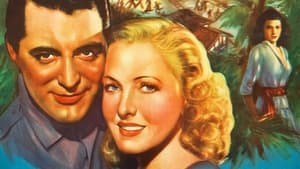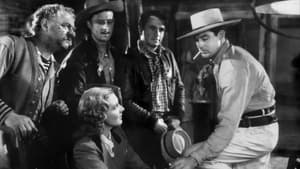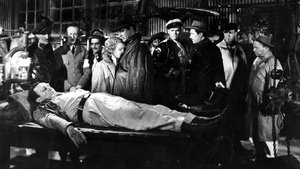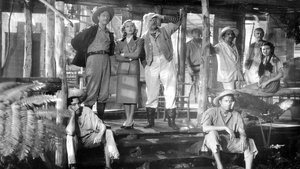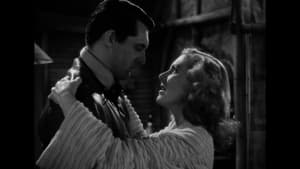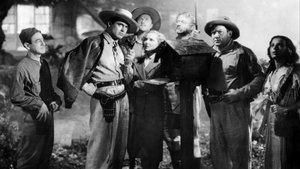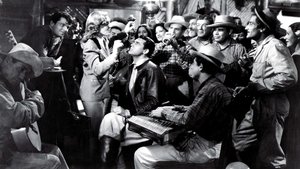Contact: info@alwanfilm.com
Video Sources 0 Views
- Watch trailer
- Only Angels Have Wings


Synopsis
Table of Contents
ToggleReview: Only Angels Have Wings 1939 Colorized – A Classic Tale of Adventure and Redemption

Introduction
“In Only Angels Have Wings” (1939) is a timeless masterpiece that epitomizes the golden age of Hollywood cinema. In this article, we’ll explore the significance of this early colored film and its enduring impact on audiences, celebrating its timeless themes of courage, camaraderie, and redemption.
Check The Full Colorized Movies List
Check Our Colorized Movies Trailer Channel
Understanding Only Angels Have Wings 1939 Colorized: Director, Cast, and Genre
Directed by the legendary Howard Hawks, “Only Angels Have Wings” (1939) showcases his mastery of storytelling and his ability to create unforgettable characters. The film features an ensemble cast of Hollywood’s brightest stars, including Cary Grant, Jean Arthur, and Rita Hayworth, who deliver powerhouse performances that bring the rugged world of a South American outpost to life. Blending elements of romance, adventure, and drama, “Only Angels Have Wings” (1939) transports viewers to a world where danger lurks around every corner and where the bonds of friendship are forged in the crucible of adversity.
Exploring the World of Only Angels Have Wings 1939 Colorized: Plot and Characters
At its core, “Only Angels Have Wings” (1939) follows the exploits of a group of daring pilots who risk their lives to deliver mail over the treacherous Andes mountains. Led by the charismatic Geoff Carter, played by Cary Grant, these fearless aviators navigate the skies with skill and daring, facing danger and death with steely resolve. Along the way, they encounter a cast of colorful characters, from a sassy showgirl played by Jean Arthur to a mysterious femme fatale portrayed by Rita Hayworth. As the tension mounts and the stakes escalate, the stage is set for a thrilling adventure that will test the courage and resilience of all involved.
The Art of Film Colorization
Film colorization has long been a contentious issue in the world of cinema, with purists arguing that it compromises the artistic integrity of classic films. However, when done tastefully and with respect for the original work, colorization can breathe new life into beloved movies, offering viewers a fresh perspective on familiar stories. In the case of “Only Angels Have Wings” (1939), the decision to release the film in a colorized format opens up new avenues for appreciation, allowing audiences to experience the beauty of the South American landscape in vibrant hues.
Early Colored Films: A Brief History
The history of colored films dates back to the early days of cinema, with filmmakers experimenting with various techniques to add color to their creations. From hand-painted frames to early Technicolor processes, the evolution of colored film has been marked by innovation and ingenuity. As technology has advanced, so too has the art of colorization, with modern digital techniques offering filmmakers unprecedented control over the color palette of their films.
Only Angels Have Wings 1939 and Its Early Colored Version
The decision to release “Only Angels Have Wings” (1939) in a colorized format was met with both anticipation and apprehension. While some welcomed the opportunity to experience the film in vibrant color, others expressed concerns about the potential impact on its visual aesthetic. Nevertheless, the early colored version of “Only Angels Have Wings” (1939) offers viewers a fresh perspective on the classic tale of adventure and romance, enhancing its immersive qualities and bringing its richly detailed world to life in stunning detail.
The Debate Over Film Colorization
The debate over film colorization is a complex and multifaceted issue, with passionate arguments on both sides of the divide. Proponents argue that colorization revitalizes classic movies for modern audiences, breathing new life into timeless stories and introducing them to a new generation of viewers. Conversely, detractors maintain that colorization detracts from the authenticity of the original work, altering the director’s artistic intent and diminishing the historical significance of the film.
Examining Only Angels Have Wings 1939 as an Early Colored Film
As with any colorized classic, the impact of colorization on “Only Angels Have Wings” (1939) is a matter of personal interpretation. Some may argue that it enhances the film’s visual appeal and immerses viewers in its world, while others may feel that it detracts from the stark beauty of the original black and white version. Regardless of one’s stance on the issue, there’s no denying the enduring power of “Only Angels Have Wings” (1939) as a cinematic masterpiece that continues to captivate audiences with its timeless themes and unforgettable characters.
Influence and Legacy: Only Angels Have Wings 1939 Colorized’s Impact on Cinema
“Only Angels Have Wings” (1939) has left an indelible mark on the world of cinema, inspiring countless filmmakers and captivating audiences with its thrilling tale of adventure and romance. From its breathtaking aerial sequences to its compelling character drama, the film continues to resonate with viewers of all ages, reaffirming its status as a beloved classic of the adventure genre.
Director’s Cinematic Legacy: Beyond Only Angels Have Wings 1939 Colorized
Howard Hawks’ influence extends far beyond “Only Angels Have Wings” (1939), with a vast body of work that spans multiple genres and styles. From screwball comedies to hard-boiled crime dramas, Hawks’ films are celebrated for their wit, intelligence, and impeccable craftsmanship. Through his groundbreaking work, Hawks has left an indelible imprint on the world of cinema, inspiring generations of filmmakers to follow in his footsteps.
Themes Explored in Only Angels Have Wings 1939 Colorized
“Only Angels Have Wings” (1939) explores a myriad of themes, from the fragility of life to the resilience of the human spirit. Through its richly drawn characters and gripping storytelling, the film invites viewers to ponder the complexities of love, loyalty, and sacrifice in the face of danger and uncertainty. As audiences immerse themselves in the world of “Only Angels Have Wings” (1939), they are reminded of the enduring power of friendship and the indomitable spirit of the human soul.
Reception and Controversy Surrounding Only Angels Have Wings 1939 Colorized
Upon its release, “Only Angels Have Wings” (1939) received widespread critical acclaim, with many praising its breathtaking aerial sequences, riveting performances, and poignant storytelling. However, the decision to release the film in a colorized format sparked debate among purists, reigniting the age-old discussion surrounding film preservation and artistic integrity. Despite the controversy, “Only Angels Have Wings” (1939) remains a beloved classic that continues to captivate audiences with its timeless themes and unforgettable characters.
Where to Watch Only Angels Have Wings 1939 Colorized Online
For those eager to experience the timeless magic of “Only Angels Have Wings” (1939), the film is readily available on popular streaming platforms such as Netflix, Amazon Prime, and Hulu. Whether you choose to watch it in its original black and white format or the early colored version, “Only Angels Have Wings” (1939) promises to transport you to a world of adventure and romance, where love conquers all and the human spirit soars to new heights.
FAQs About Only Angels Have Wings 1939 Colorized
Q: Is “Only Angels Have Wings” (1939) based on a true story? A: No, “Only Angels Have Wings” (1939) is a fictional tale crafted by screenwriter Jules Furthman, who drew inspiration from real-life accounts of daredevil pilots who braved the skies to deliver mail over treacherous mountain passes.
Q: Who are the main actors in “Only Angels Have Wings” (1939)? A: “Only Angels Have Wings” (1939) features an ensemble cast led by the charismatic Cary Grant, whose portrayal of the fearless pilot Geoff Carter anchors the film with his trademark charm and charisma. Jean Arthur and Rita Hayworth deliver standout performances as the two women who capture his heart, while Thomas Mitchell and Richard Barthelmess round out the cast with their memorable portrayals of Carter’s loyal comrades.
Q: What awards did “Only Angels Have Wings” (1939) win? A: While “Only Angels Have Wings” (1939) did not win any major awards, it received critical acclaim for its breathtaking aerial sequences, riveting performances, and poignant storytelling. Cary Grant’s performance as Geoff Carter was particularly praised, earning him widespread acclaim as one of Hollywood’s most talented leading men.
Q: Why was “Only Angels Have Wings” (1939) released in a colorized format? A: The decision to release “Only Angels Have Wings” (1939) in color was made to introduce the film to a new generation of viewers and enhance its visual appeal for modern audiences. While the choice to colorize the film sparked debate among purists, it ultimately allowed “Only Angels Have Wings” (1939) to reach a wider audience and ensure its continued relevance in the annals of cinematic history.
Conclusion
“In Only Angels Have Wings” (1939), Howard Hawks crafted a cinematic masterpiece that continues to captivate audiences with its timeless themes of courage, camaraderie, and redemption. Whether experienced in its original black and white format or the early colored version, the film stands as a shining example of the power of cinema to transport us to another time and place, where the human spirit soars to new heights and love conquers all. As we reflect on the enduring legacy of “Only Angels Have Wings” (1939), let us celebrate its status as a beloved classic that continues to inspire and uplift audiences around the world.

